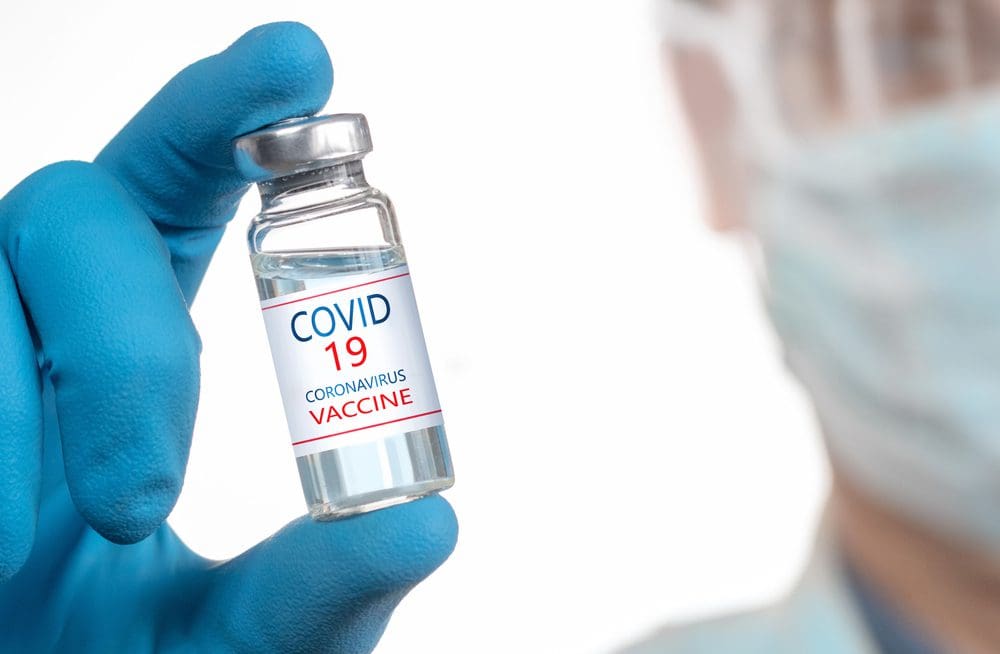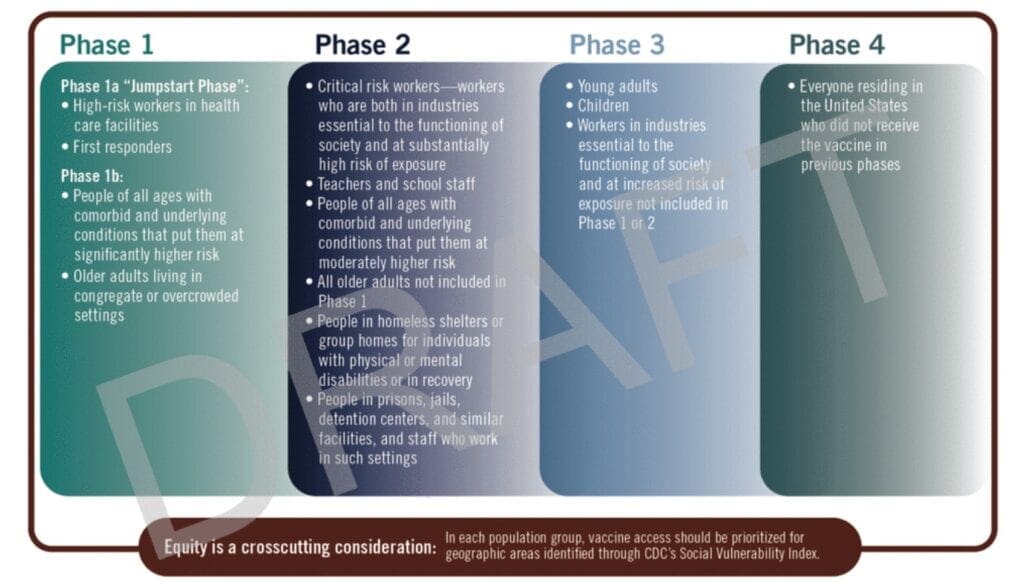Search Posts
Recent Posts
- Rhode Island Weather for June 18, 2025 – Jack Donnelly June 18, 2025
- Johnson & Wales University names Joseph Greene, Providence campus president, to lead major new initiatives June 18, 2025
- To Do in RI: Hospitality employees and Newport Co. residents welcome at free Newport attractions June 18, 2025
- Time for Sour Grapes – June 18, 2025 – with Tim Jones June 18, 2025
- It is what it is: Commentary, 6.18.25 – with Jen Brien June 18, 2025
Categories
Subscribe!
Thanks for subscribing! Please check your email for further instructions.

Who will be first in line for COVID19 Vaccine
National Academies Release Draft Framework for Equitable Allocation of a COVID-19 Vaccine, Seek Public Comment
Editor’s Note: While no decisions have yet been made, this is the way science is going towards an eventual decision time about vaccine distribution.
The National Academies of Sciences, Engineering, and Medicine today released for public comment a discussion draft of a preliminary framework to assist policymakers in planning for equitable allocation of a vaccine against COVID-19. The committee that developed the draft framework was formed in July in response to a request to the National Academy of Medicine from the National Institutes of Health and Centers for Disease Control and Prevention (CDC).
The discussion draft includes a summary of lessons learned from past allocation frameworks for mass vaccination campaigns, including for H1N1 influenza in 2009 and during the Ebola epidemic in West Africa in 2013-2016, as well as from recent guidance during the COVID-19 pandemic for the allocation of scarce resources, such as medical resources and supplies. Drawing from these lessons learned, the committee then defined the foundational principles, primary goal, and criteria for determining an equitable allocation framework. The criteria include:
- Risk of acquiring infection: Higher priority given to individuals who have a greater probability of being in settings where COVID-19 is circulating and exposure to a sufficient dose of the virus.
- Risk of severe morbidity and mortality: Higher priority given to individuals who have a greater probability of severe disease or death if they acquire infection.
- Risk of negative societal impact: Higher priority given to individuals with societal function and upon whom other people’s lives and livelihood depend directly and would be imperiled if they fell ill. It does not consider their wealth or income, or how readily an individual could be replaced in a work setting, given labor market conditions.
- Risk of transmitting disease to others: Higher priority given to individuals who have a higher probability of transmitting the disease to others.
For the initial period when vaccine demand exceeds supply, the committee recommends a four-phased approach guided by evidence to achieve the primary goal of maximizing societal benefit by reducing morbidity and mortality caused by the transmission of novel coronavirus. As the supply of vaccine increases, it will be incrementally phased in, so that some people or groups of people will receive it earlier than others. The discussion draft outlines the phases and rationale for prioritizing each group included in each phase.

“While major efforts are being made to have a significant supply of COVID-19 vaccine as soon as possible, the committee has been tasked with considering the tough choices that will need to be made for allocating the tightly constrained initial supplies,” said committee co-chair Helene Gayle, president and CEO of the Chicago Community Trust. “We look forward to receiving and reviewing public feedback on our draft four-phased approach for allocation, to inform the committee’s work moving forward,” added committee co-chair William H. Foege, emeritus distinguished professor of international health at Emory University and former CDC director.
People of color — specifically Black, Hispanic or Latinx, and American Indian and Alaska Native — have been disproportionately impacted by COVID-19 with higher rates of transmission, morbidity, and mortality. Currently there is little evidence that this is biologically mediated, but rather reflects the impact of systemic racism leading to higher rates of co-morbidities that increase the severity of COVID-19 infection and the socioeconomic factors that increase likelihood of acquiring the infection, such as having front line jobs, crowded living conditions, lack of access to personal protective equipment, and inability to work from home. Therefore, the committee’s draft framework focuses on these underlying causes instead of discrete racial and ethnic categories. The committee used the CDC’s Social Vulnerability Index, which captures many recognized social determinants of health, to prioritize within the phases in the draft framework.
As of Aug. 1, nearly 80 percent of all COVID-19 deaths in the U.S. have occurred in people over the age of 65, and a significant proportion of these deaths were individuals living in long-term care facilities. It is clear that directly protecting older adults — particularly those living in congregate or overcrowded settings — will have substantial impact on COVID-19-related severe outcomes, the draft framework says, and it gives higher priority to these groups.
There are many uncertainties affecting COVID-19 vaccine allocation, such as number and timing of available vaccine doses, number of available vaccine types, vaccine efficacy and safety, vaccine uptake, and vaccine distribution and administration. The discussion draft also includes a summary of the application of the framework in various scenarios, such as if a vaccine requires two doses rather than one or if some health insurers do not cover full vaccine administration costs.
“We are pleased to help inform the government’s decision-making process and provide our expert advice for priority-setting for the equitable allocation of potential COVID-19 vaccines,” said National Academy of Medicine President Victor J. Dzau. “Input from the public on this draft framework, especially from communities disproportionately affected by COVID-19, is essential to produce a final report that is objective, balanced, and inclusive.”
The public comment period will be open from noon EDT Tuesday, Sept. 1, until 11:59 p.m. EDT Friday, Sept. 4. Commenters will be able to download and review the discussion draft before submitting a comment through a form at nationalacademies.org/VaccineAllocationComment.
In addition, the study committee will host a public listening session on Sept. 2, which will include a brief presentation on the draft framework and an opportunity for members of the public to address the committee directly (as individuals or representatives of organizations). Reporters who wish to attend should register in advance.
The committee’s final report, expected early this fall, will include a final recommended allocation framework informed by public comments, along with additional chapters addressing issues such as vaccination program administration, evaluation, and assessment (to ensure effectiveness and equity); vaccine hesitancy, demand, and promotion; risk communication and strategies for community engagement; and global considerations.
The study — undertaken by the Committee on Equitable Allocation of Vaccine for the Novel Coronavirus — is sponsored the Centers for Disease Control and Prevention and the National Institutes of Health. The National Academies are private, nonprofit institutions that provide independent, objective analysis and advice to the nation to solve complex problems and inform public policy decisions related to science, technology, and medicine. They operate under an 1863 congressional charter to the National Academy of Sciences, signed by President Lincoln. For more information, visit nationalacademies.org.
